These Are The Charlie Hebdo Cartoons That Terrorists Thought Were Worth Killing Over
Known for its caricatures of the Prophet Muhammad, as well as critical depictions of Catholics, Jews and French politicians, the magazine regularly stirred controversy.
Charlie Hebdo gained notoriety in 2006 for its portrayal of a sobbing Muhammad, under the headline “Mahomet débordé par les intégristes” (“Muhammad overwhelmed by fundamentalists”). Within its pages, the magazine published 12 cartoons of the Prophet Muhammad, bringing unprecedented condemnation from the Muslim world. The French Council for the Muslim Faith eventually sued the weekly for the cartoon. The issue has since been considered the one which positioned Charlie Hebdo as a target for terrorist attacks.
Before a French court sided with Charlie Hebdo in the lawsuit, in 2007, another cartoon was published with the text “Charlie Hebdo must be veiled!”
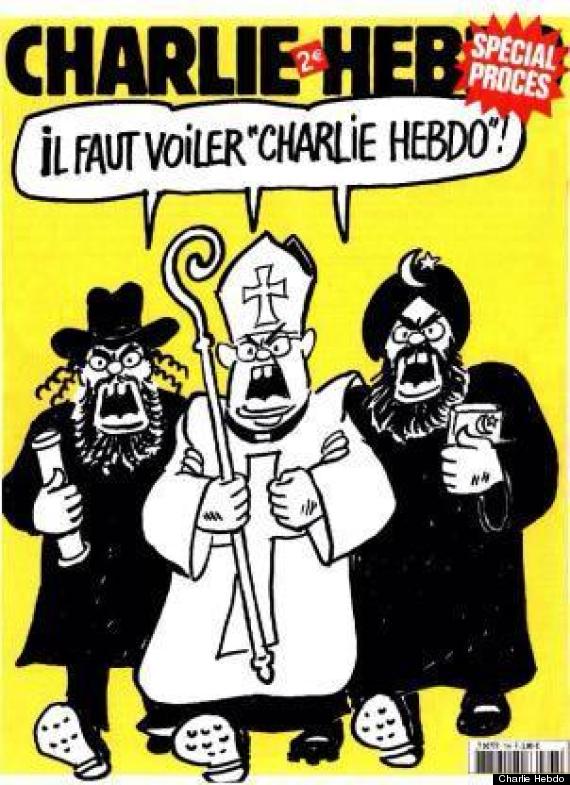
In 2011, headlined by a cartoon reading “100 lashes if you don’t die of laughter,” an issue invited Muhammad to be a “guest editor” for the weekly. The Charlie Hebdo offices were firebombed following its publication.
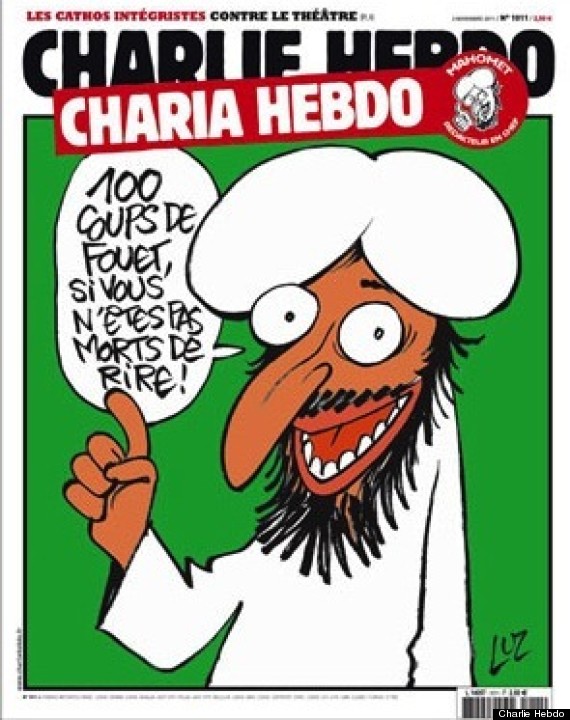
Charlie Hebdo’s website was hacked following a 2011 cartoon depicting the Prophet Muhammad as gay.
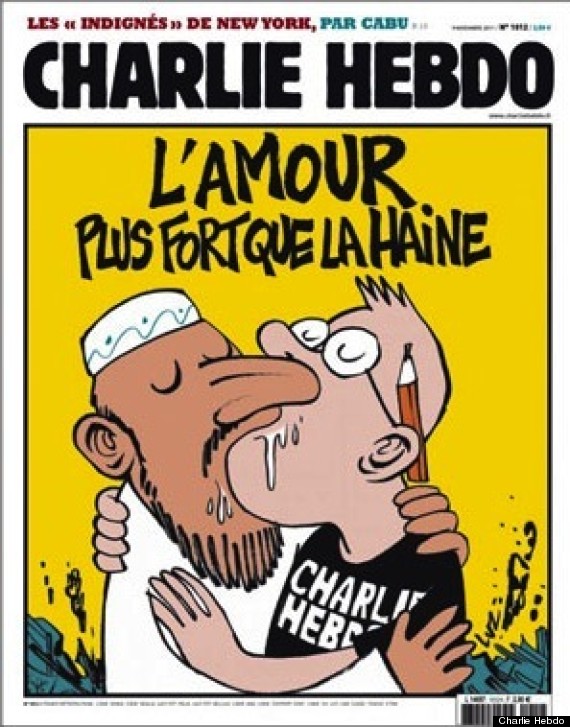
The weekly received backlash again in 2012 after publishing a cartoon criticizing religious Muslims and Jews.
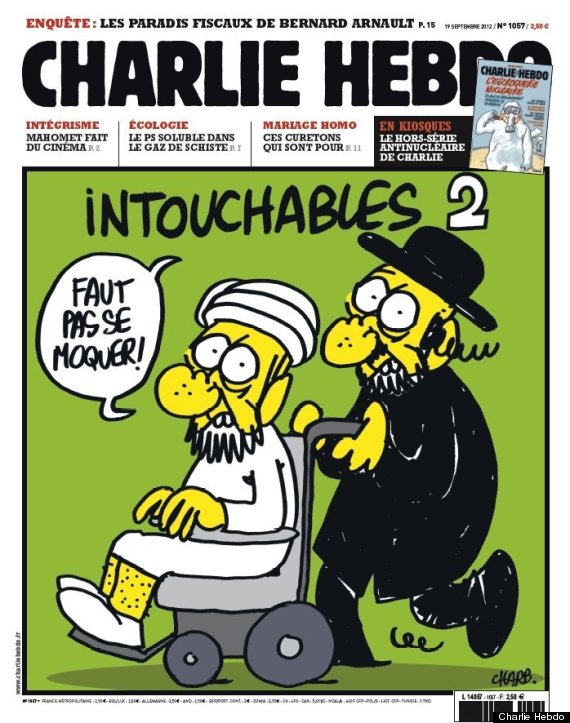
In a more recent issue, the magazine published a cartoon depicting a member of the Islamic State group beheading Muhammad.
Obituary: Defiant Charlie Hebdo editor ‘Charb’
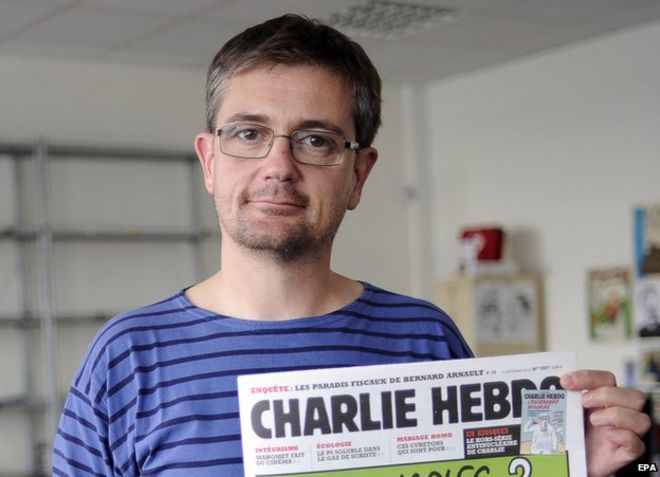 Image copyrightEPA
Image copyrightEPAStephane Charbonnier, editor of the French satirical magazine Charlie Hebdo, was among four cartoonists killed in the Paris massacre which left 12 people dead in total.
Charbonnier, known as “Charb”, was 47. He had received death threats in the past and had been under police protection.
Reports say he was in an editorial meeting with the others when two masked gunmen burst in and opened fire with Kalashnikov assault rifles. The gunmen reportedly shouted “Allahu akbar!” (God is great).
The left-wing magazine’s famous cartoonists went by nicknames – the others who died were called Cabu, Tignous and Wolinski.
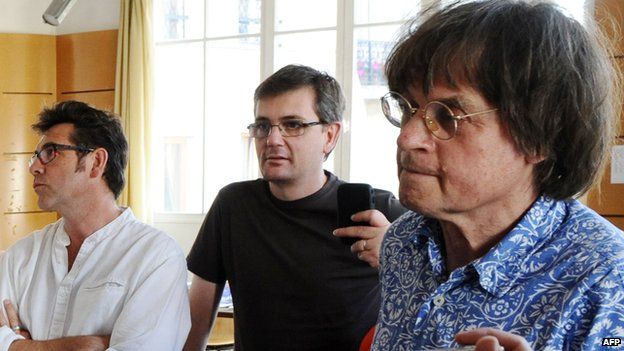 Image copyrightAFP
Image copyrightAFPCharb had strongly defended Charlie Hebdo’s cartoons featuring the Prophet Muhammad.
“Muhammad isn’t sacred to me,” he told the Associated Press in 2012, after the magazine’s offices had been fire-bombed.
“I don’t blame Muslims for not laughing at our drawings. I live under French law. I don’t live under Koranic law.”
In 2007 Charlie Hebdo also defended itself in court over cartoons of the Prophet Muhammad, reprinted in the magazine, which had angered Muslims.
But Charlie Hebdo’s anti-establishment satire was wide-ranging – it included poking fun at the far right, and aspects of Catholicism and Judaism.
‘Idiot extremists’
The Belgian newspaper La Libre Belgique says a cartoon by Charb this week was hauntingly prophetic. It was headlined “Still no attacks in France” and showed an Islamist militant with the speech bubbles: “Wait! We still have until the end of January to present our wishes” – a satirical play on new year wishes.
He was the weekly magazine’s most recent editor, having taken the reins in 2012.
Charlie Hebdo was launched in 1969 but folded in 1981. However it was resurrected in 1992. Its circulation was not very big.
Its offices were destroyed in a petrol bomb attack in November 2011, a day after it named the Prophet Muhammad as “editor-in-chief” for its next issue.
In a BBC interview Charbonnier said that incident was an attack against freedom itself and an act by “idiot extremists” not representative of France’s Muslim population.
He said the attack showed that Charlie Hebdo was right to defy Islamists and “make their lives difficult, as much as they do ours”.
His regular illustrations for the magazine were titled “Charb doesn’t like people”.

